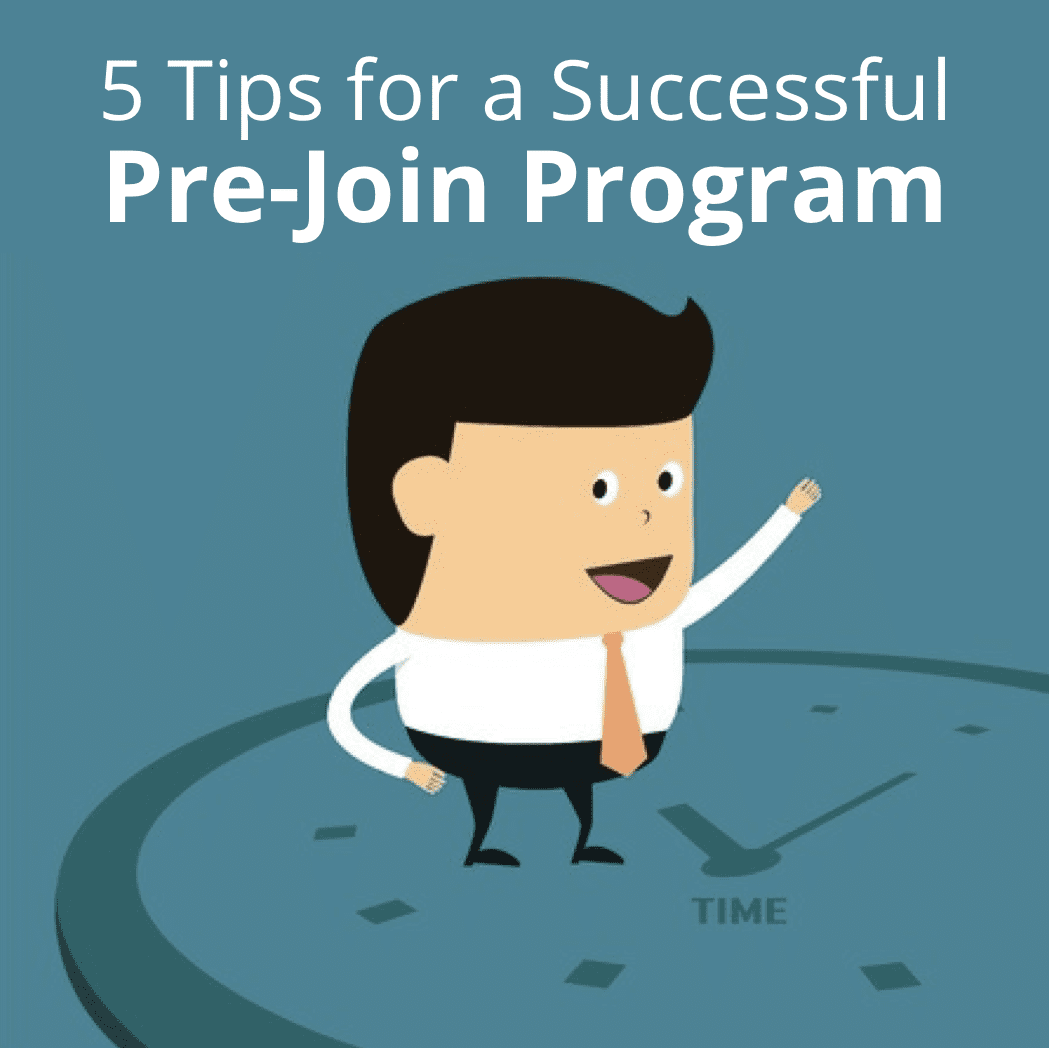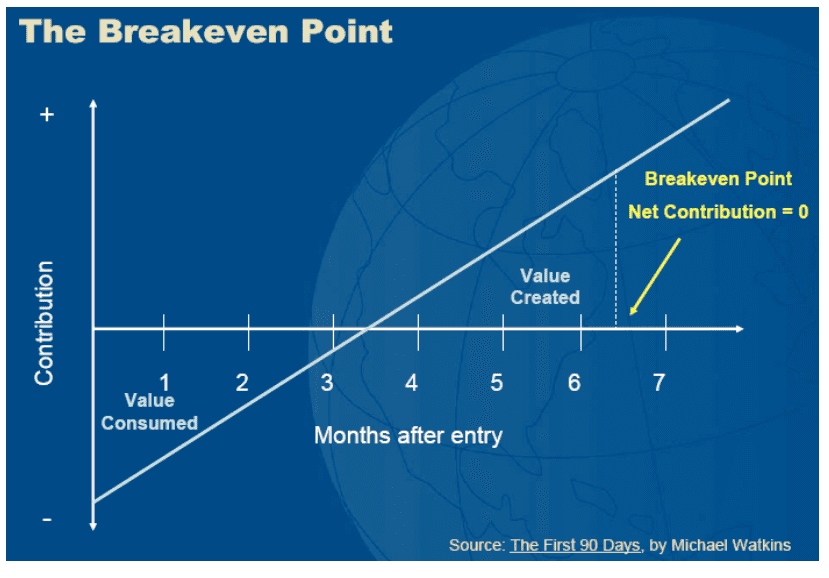
HCL was able to cut pre-join churn by ~90% by engaging millennials during the pre-join period. Only a few companies recognize the power of harnessing the excitement new hires feel at this stage and involving them in a pre-join program that extends this motivation past their first day on the job.
Anyone who’s ever received an offer letter knows the euphoria that accompanies learning the news that your hard work has paid off and you’ve found a company willing to pay you for your hard work. The honeymoon is short, however. That sense of euphoria can quickly wear off when you think about how overwhelming joining a new company can be.
According to the Corporate Leadership Council, “Fifty percent of newly hired executives quit or are fired within the first three years.” Similarly, the Center for Creative Leadership states that “Forty to 50 percent of new CEOs fail in the first 18 months.” The onboarding experience shapes the ability for senior executives to gain confidence and build trust and productivity to make a positive impact on your organization.
 Human Capital Institute.
Human Capital Institute.
Considering the value of bringing someone to that breakeven point early, the pre join period is the perfect time to set the tone and make sure that your new team members are set up for success rather than heading for the exit.
According to Stewart, Cooper, & Coon, businesses who implement pre-join programs typically raise the probability of hiring an A-player from 25% to 90% and reduce the failure rate in the first 18 months from 40% to 10%.
At it’s core, your pre-join program should be adaptable to organizational shifts, changes in the marketplace, and knowledge about what works best for your audience. Below are a few tips for executing a successful pre-join program.
1. Communicate Details of Your Pre-Join Program in the Offer Letter
Before the prospective employee has accepted your offer, he or she should know the level of company love they are in for should they say “yes”. Use the offer letter to touch upon the details of your pre-join program, showing your would-be employee that they will be fully supported during the entire onboarding process and helping to reduce any anxieties pertaining to starting a new job.
Beyond the context on how the role contributes to the organization’s larger goals, the job offer should describe the components of the pre-join program. This can include a training program that equips your new hire with the skills and knowledge they need to succeed, access to an information database, as well as ways to get to know fellow new hires and current employees.
2. Your Pre-Join Program Should Help New Hires Find Information
Your new hire will have no shortage of questions before starting their new job. Empower them to find the answers they need. Be proactive by showing them exactly where they can access knowledge bases and training materials and provide links to any useful information pertaining to the most common questions a new hire may have.
There are other benefits to having a well-organized wealth of information surrounding your company’s policies, history, best practices, and relevant technical training. By making such resources available publicly, you also help to convince would-be applicants that your company would support them every step of the way.
Lois Miller of MasterCard Inc. took over the credit card company’s onboarding program in late 2011 and has had great success with Workday, their pre-join program:
“As soon as employees are hired — and before they even start — they are added to the Workday system, which triggers access to a number of onboarding tools. They receive an email welcoming them aboard with links to videos from the CEO, along with access to the cloud application where they can update their employment information, upload a photo for their badge, read about learning opportunities and complete paperwork for benefits enrollment, taxes and direct deposit.”
According to Miller, in the year since they’ve been using the onboarding system, new hires report better onboarding experiences.
3. Your Pre-Join Program Should Help Employees Feel Like They Belong
Your first day at a new job can bring back memories of your first day at a new school – and being the new kid is hard. Help new hires feel comfortable in a new environment by having them interface with future co-workers before they even set foot in the door.
If your new hire is already located in the same place as your company, organize a local meet-and-greet. If your organization has an enterprise-level social network or a group on a public social network like LinkedIn — give new hires access to these digital forums. The ability to learn about and interact with future co-workers, ask questions, and receive advice can do wonders for a new hire’s confidence in entering a new environment.
4. Leverage Gamification in Your Pre-Join Training Program
Today’s young workforce has very little patience for watching an instructor deliver dry technical tutorials and presentations about company values. Gamification mechanics in training materials do wonders for helping employees absorb and retain key information while ensuring continued motivation to stick with the learning program.
An effective gamified learning experience is visually rich, rewards performance through game-based incentives, and incorporates social mechanics such as comments, likes, and learner profiles. The learning programs should also be tailored to the new hire’s role, start date, and goals while giving them the flexibility to play when and where they want.
The ability to conquer game levels while amassing badges and titles helps new hires feel motivated and appreciated before they’ve even started their new role. HCL Technologies leveraged Mindtickle’s platform and significantly reduced the drop-out rate for employees that had accepted job offers. They observed that the probability of a new hire dropping after playing a gamified training game was only 1.26%, compared to 10.62% for candidates who did not play the game.
5. Carefully Craft Your Pre-Join Program’s Training Material
An effective pre-join curriculum should educate new hires on key hard and soft skills needed on the job while enabling their integration into a company’s ecosystem. This means adopting a blended approach to employee orientation, combining technical training with education on a company’s philosophies as their pertain to soft skills.
All the information provided during the pre-join period should be non-proprietary, seeing how at this stage new hires have typically not signed all the non-disclosure agreements. In other words, training material should exclude things like launch plans for new product and services but can include public information such as technical how-to’s, company history, and tips for how to be successful in your organization.
Your pre-join curriculum should also be flexible, like the program Mindtickle developed for eBay, which allowed trainers to update content and continuously improve courses for successive groups of new hires.
Be sure to consistently monitor the impact your pre-join program is making by tracking participation in training and socialization activities, and comparing these to new hire dropout and retention rates, as well as employee productivity metrics. Doing so will help you quantify the success of your pre-join program and bring attention to areas for improvement. The result: a pre-join program that is continuously improving while bringing your organization higher retention rates, more engaged employees, and a more productive workforce.
Are you implementing any of these tips into your pre-join program?



 By Rahul Mathew
By Rahul Mathew

